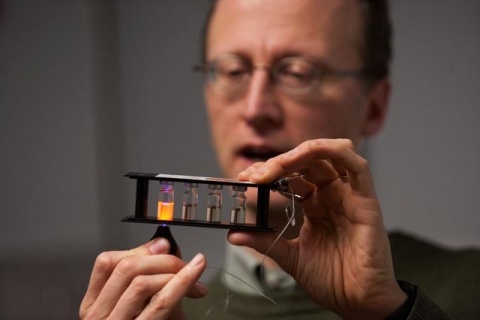
As a professor of physics and astronomy, John Prineas is responsible for teaching and conducting important research at the Iowa Advanced Technology Laboratories, where he manages as many as six projects at any given time.
But, until recently, limits on the amount of electronic file storage available to Prineas and his several graduate research assistants and collaborators made it difficult access to the files they needed to review and analyze data in a timely manner.
To improve access to electronic files, accommodate greater demand, and meet the diverse needs of campus, UI technology professionals initiated an electronic file storage centralization project in summer 2015. The project aims to migrate all files and relevant data from duplicative services to the central service and address service gaps.
OneIT unified a team of IT professionals from various campus units to address a common need.
In assessing research data storage services at the UI, they determined that faculty would benefit from having access to more free storage—five terabytes, rather than the existing three.
“We found that there’s a whole group of people who fall between the storage service options, where they need more than three terabytes of free space, but not much more,” says ITS Senior IT Support Consultant Laurie Hafner Dahms, who co-leads the project team with Mark Wilson, Director of Research Computing at IIHR, a hydroscience research unit in the College of Engineering.
“We’re trying to address that need, and also encourage the campus community to invest in storage as a service, rather than people buying equipment on their own,” says Hafner Dahms. “It’s beneficial to the university because units don’t have to house the equipment—which cuts heating and cooling costs and reduces security risks—and because pooling purchases means better pricing.”
Having access to centralized file storage has been valuable to Prineas, who directs a molecular beam epitaxy facility for growth of semiconductor crystalline solids and conducts materials research for the development of novel photonic and optoelectronic devices. With everything on a central server that’s accessible nearly anywhere, he’s able to monitor data his students collect in real time, and can jump in right away if it looks like a machine is malfunctioning.
“Previously we had data stored on different computers throughout the department and it was almost impossible to get it all together, making it difficult to draw connections between measurements,” Prineas says. “We would often spend inordinate amounts of time being puzzled about things we should not have been puzzled about.”
The extra storage space has also likely saved the department money in the long run, removing the need to spend money on a server for additional storage.
“If we tried to replicate this ourselves, we would have needed a server and a dedicated person to take care of it,” Prineas says. “It would have cost a lot of money, so it’s really helpful to have these centralized facilities.”